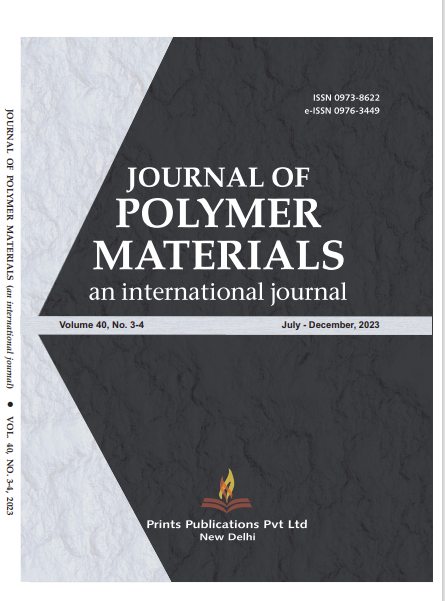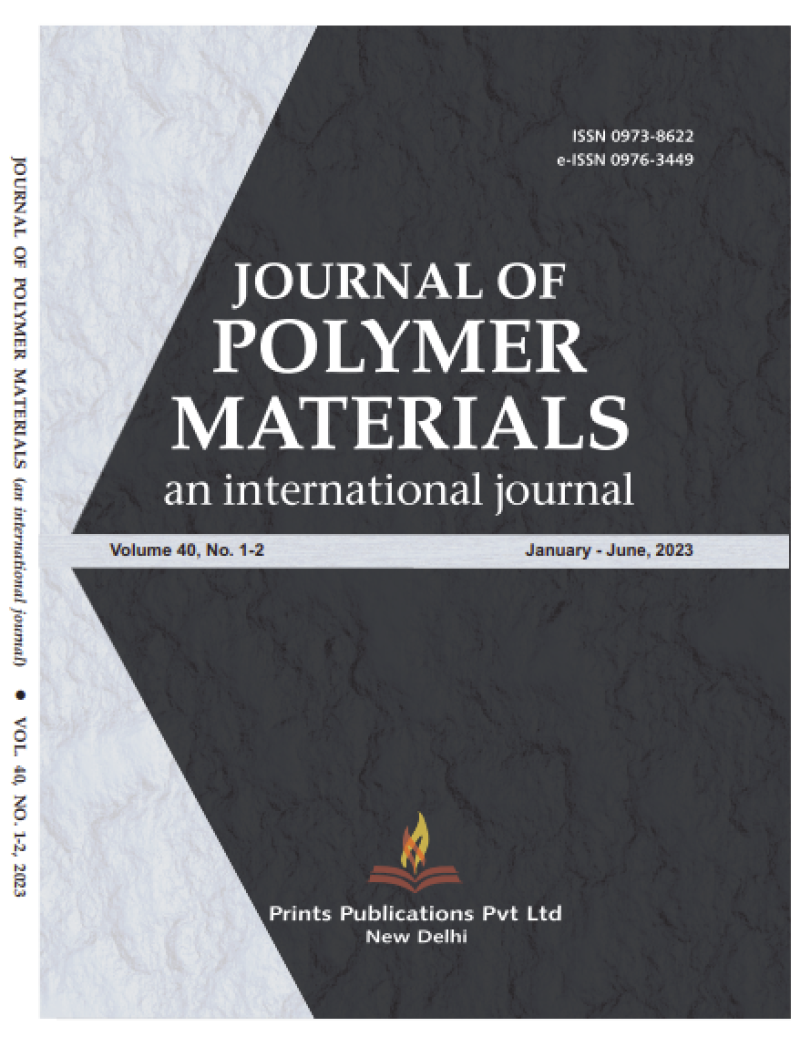Journal of Polymer Materials : An International Journal
Current Volume: 40 (2023 )
ISSN: 0973-8622
e-ISSN: 0976-3449
Periodicity: Quarterly
Month(s) of Publication: March, June, September & December
Subject: Chemistry
DOI: 10.32381/JPM
Moxifloxacin Loaded Chitosan Gel Formulations for the Treatment of Periodontal Diseases
By : Nur Syazwani binti Azeran, Nur Diyana binti Zazali, Selin Seda Timur, Ayben Işılay Özdoğan, Melike Ekizoğlu, Ravi Sheshala, Kamal Dua, Priyadarshi Soumyaranjan Sahu, Sevda Şenel
Page No: 157-169
Abstract
For treatment of periodontal diseases, the local delivery of antimicrobials into periodontal pocket has been shown to be more effective than the systemic delivery. However, the major challenge for the formulators is the removal of the delivery system from the application side due to the salivation as well as the movement of the tongue. Mucoadhesive polymers have been successfully utilized to go over this obstacle. In recent years, particularly chitosan has been widely investigated for periodontal delivery systems not only for its mucoadhesive properties but also for its antimicrobial activity. In our study, we developed a local delivery system for an antimicrobial drug, moxifloxacin hydrochloride (MF), at 0.5 % w/v,using chitosan for the treatment of periodontal diseases. For comparison, formulations based on two other mucoadhesive polymers, carbomer (Carbopol 940®) and hydroxypropyl methylcellulose(HPMC) were also prepared. Viscosity, mucoadhesion, drug release and permeation properties as well as the antimicrobial activity of the gel formulations was evaluated in vitro. The developed formulations with a suitable viscosity for application were found to remain on the mucosa and release the drug in a prolonged fashion. Drug release from the formulations was found to be dependent on the viscosity of the formulations. A relative correlation was found between viscosity and mucoadhesion for the polymers investigated, with an order of HPMC>Carbopol®=Chitosan. Permeation of the drug was increased in presence of chitosan. The antimicrobial activity of MF against Staphylococcus aureus and Streptococcus mutans were found to be enhanced with the developed formulations.The highest antimicrobial activity was observed with the chitosan-based formulations, due to the synergic effect of chitosan itself. Our results showed that chitosan based formulation is a promising local delivery system for treatment of periodontal disease by increasing the effect of the drug due to its mucoadhesive and penetration enhancing effect as well its antimicrobial activity. Furthermore, with these properties the developed formulations will provide reduced frequency of administration, which result in higher patient compliance.
Authors :
Nur Syazwani binti Azeran, Nur Diyana binti Zazali and Ravi Sheshala : School of Pharmacy, International Medical University, 57000 Kuala Lumpur Malaysia
Selin Seda Timur, Ayben Işılay Özdoğan and Sevda Şenel : Hacettepe University, Faculty of Pharmacy, Department of Pharmaceutical Technology, 06100-Ankara, Turkey.
Melike Ekizoğlu : Hacettepe University, Faculty of Pharmacy, Department of Pharmaceutical Microbiology, 06100-Ankara, Turkey
Kamal Dua : School of Biomedical Sciences and Pharmacy, University of Newcastle, Newcastle, NSW2300, Australia
Priyadarshi Soumyaranjan Sahu : School of Medicine, International Medical University, 57000 Kuala Lumpur Malaysia.



